Ordering coffee like a local is the first step to fully immerse yourself in Argentina’s vibrant coffee culture.
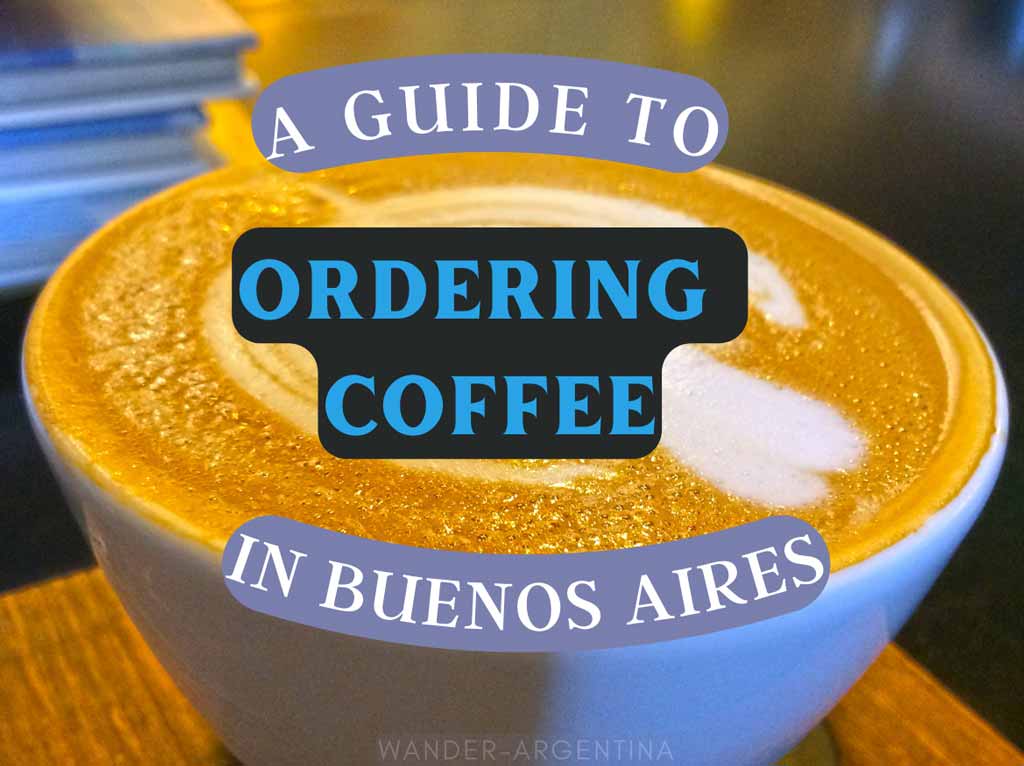
Italian coffee culture has spread worldwide in the last thirty years or so, replacing instant coffee and watery percolator fare with macchiatos and café lattes.
Thanks to the country’s many Italian immigrants, Argentines had a pre-existing tradition of Italian-style coffee — albeit with a few local twists.
Yerba mate may be the official national beverage, but coffee drinking is a refined, lingering art in Argentina’s cafes.
In fact, filtered coffee was virtually unknown in Argentina, until the last decade when Nestle ripped off Keurig and tried to impose their polluting single-use coffee pods (video link, opens in new window).
But filtered coffee hasn’t caught on en masse and can pretty much only be found at American fast food chains.
Argentina’s Coffee Quality
Traditional, Italian-style coffee preparation remains at the heart of Argentine coffee culture, but that doesn’t mean that aficionados traditionally consider it among the world’s best.
In an average corner diner the coffee is made with robusta coffee beans, while connoisseurs consider the arabica bean to be superior.
In Argentina, the majority is Brazilian robusta coffee which undergoes roasting in the ‘torrado‘ style.
During the processing phase about 15% sugar is added to mitigate the bitterness of lower quality coffee beans and the prevailing preference is for a lighter roast.
Brazilian coffee lightly roasted with sugar added remains the dominant style of coffee found in the bags sold in Argentina’s supermarkets.
There is only one supermarket brand that offers coffee that is only ‘tostado’ — or roasted, but without sugar.
Aside from the countless neighborhood and downtown Buenos Aires confiterias/cafés, whose coffee quality can vary from middling to not too bad, there are also local chains such as Aroma, Havanna, Café Martínez and The Coffee Store, offering slightly higher quality coffee than your typical cafetería and delicious snacks.
One charming aspect of frittering away a morning over a cup of joe in traditional Argentine style is that it is almost always served with a glass of seltzer and couple of cookies.
This guide is intended to help visitors navigate the Argentine twist on traditional Italian coffee.
Below are the most common cups of coffee that you can order in most Argentine cafes.
Select with care — you will be judged.
Argentina Coffee Lingo + Ordering Tips
The most common options in Argentina include ‘café’ for a shot of the strong stuff, ‘café con leche’ for coffee with milk, ‘un cortado’ for espresso ‘cut’ with a small amount of milk, and ‘cafe con leche’ which is a large coffee mitad-mitad (half coffee and half milk).
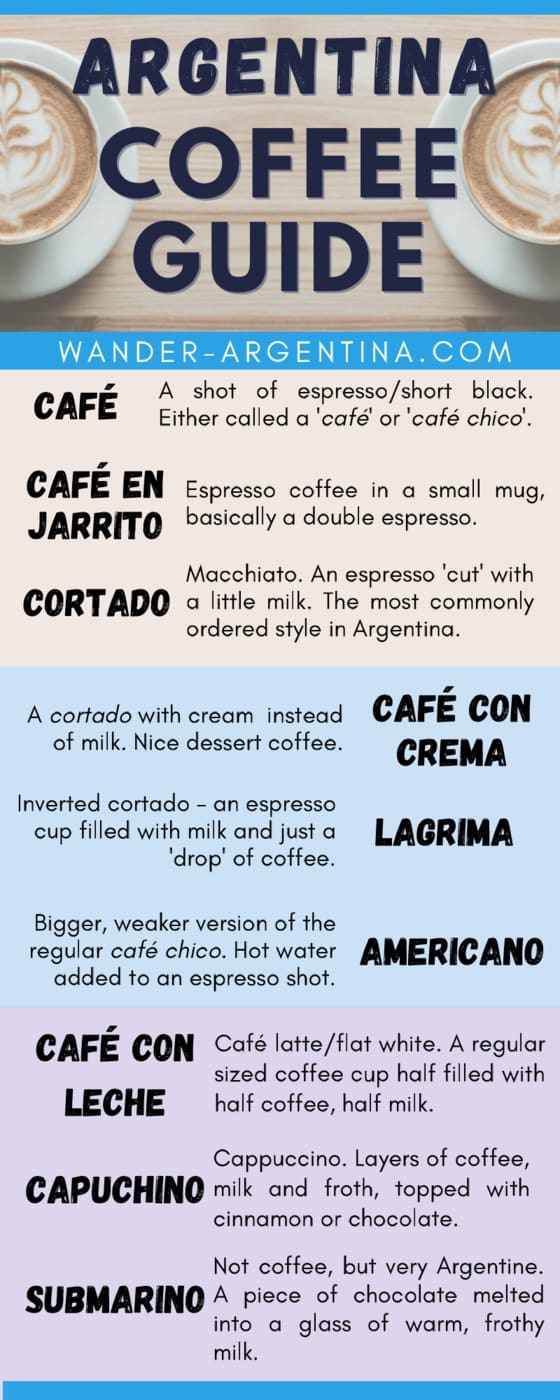
Café (a shot of espresso/short black)
If you ask for nothing more than a coffee, “un café,” without specifying details, you will be brought the basic short black in a small espresso cup.
To be sure there’s no misunderstanding, you can say, “un café chico” and give the nationally recognized hand symbol when ordering (see image).
For those who like life in the fast lane — it’s quick, strong, and it will certainly perk you up for a few hours.
Café en jarrito
The same espresso coffee as above, but in a mini-mug. It’s still smaller than a regular coffee cup.
This is basically a double espresso, so don’t expect to sleep for approximately three days after drinking one.
Cortado (macchiato)
The most commonly ordered style in Argentina, this is an espresso which has been “cut” with a little milk, to take the edge off the bitterness.
You can also ask for it in a jarrito, as above.
Only when you’ve sat in a café and sipped on a cortado can you say that you have truly visited Argentina.
Café con crema
The same as a cortado, but with a dollop of cream instead of milk. A nice dessert coffee. If you’re a tightwad, check the price first, as sometimes they will add an extra charge for the cream.
Lagrima
For the lightweights who can’t handle a cortado, a lagrima is the inversion of the formula; an espresso cup filled with milk and just a touch, or ‘drop’ of coffee.
Americano
This is like the bigger, weakling brother of the regular café chico.
Hot water is added to a shot or two of espresso to dilute the strength a little. In a pinch it’s a substitute for those used to USA-style brewed coffee, but otherwise we don’t see point of this one.
Café con leche (café latte)
A regular sized coffee cup half filled with coffee and half with milk.
You can vary the dosage by saying “mas leche que café” (more milk than coffee).
You could ask for more coffee than milk if you wanted too, but that would be a little bit crazy.
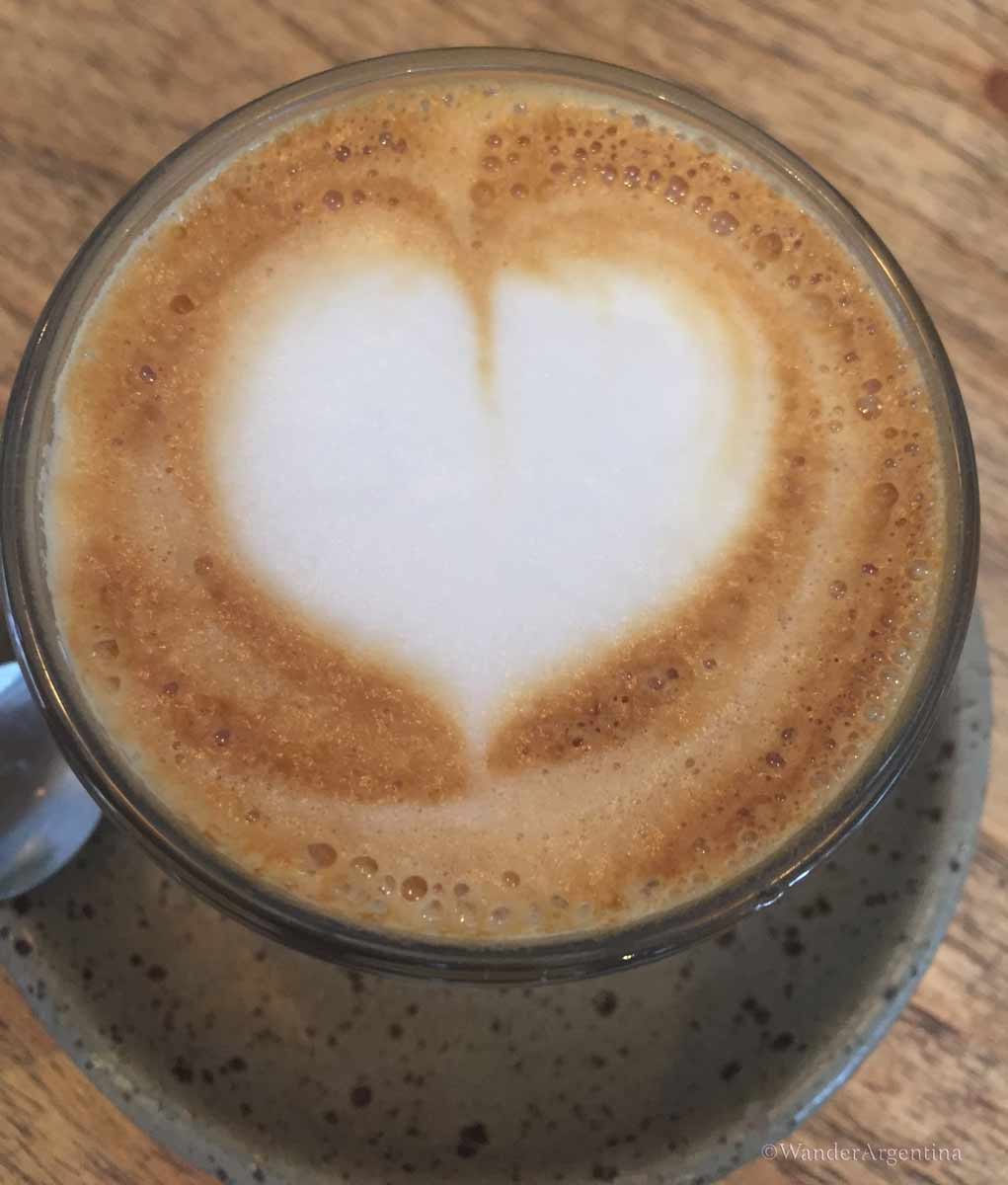
Capuchino (Cappuccino)
Argentina’s cappuccino is a slight variation on the Italian blockbuster.
It depends on the café you are in, but the typical Argentine cappuccino will usually come in a slender transparent glass, with clearly visible layers of coffee, milk and froth, topped with a little cinnamon or chocolate.
Unlike in Italy, they won’t laugh at you if you order it in the afternoon or evening.
Flat White
The flat white has arrived in Buenos Aires! As coffee culture has become more globalized, and more Aussies and Kiwis arrive to Argentina they brought their favorite coffee beverage with them.
This coffee beverage resembles a latte but contains less milk and foam — ideally 1/3 milk to 2/3 coffee.
The ‘flat white,’ has a smooth and even layer of steamed milk on top and is found only in specialty coffee shops.
Submarino (Submarine/Hot Chocolate)
Ok, it’s not coffee, but it is very Argentine. Served in the same transparent glass as a cappuccino.
This time the glass is filled with warm, frothy milk, into which a piece of chocolate is submerged.
The chocolate melts and creates a sweet, creamy treat. Mmm… delicious!
A drink for the softy in all of us.
For a real traditional Argentine treat, have a churro with the hot chocolate.
It’s a classic at the famous Cafe Tortoni on Avenida de Mayo.
Gourmet Coffee Arrives
Coffee connoisseurs rejoiced when a shift emerged in the 2010s with the rise of independent roasters and specialty coffee shops, particularly in Buenos Aires.
This has had the added benefit of raising the bar at regular confiterías and chains who now pay more attention to the coffee extraction.
They even add little foam hearts these days, aw. 💕
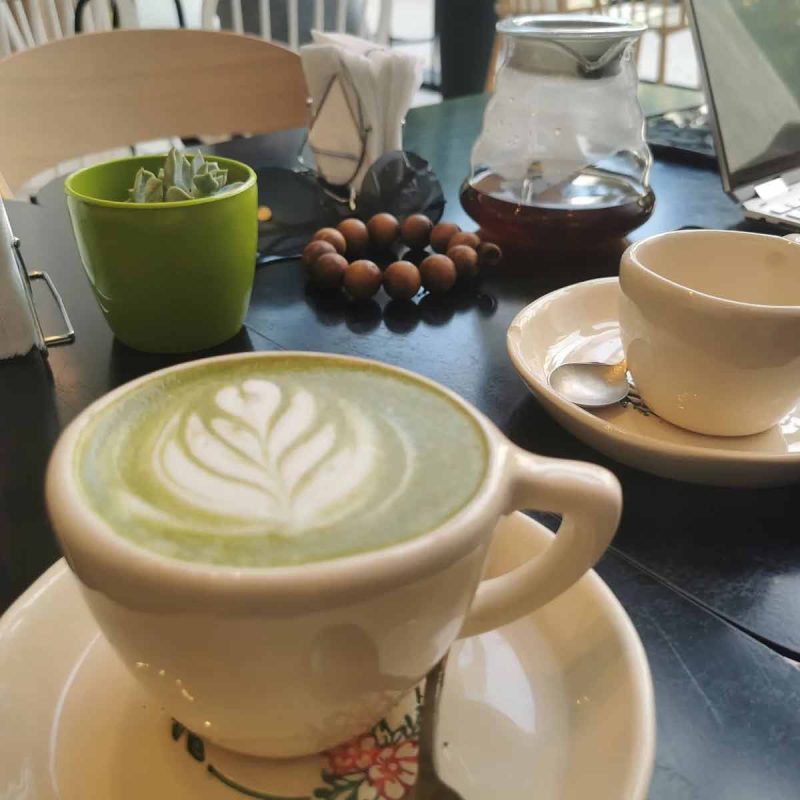
Popular among coffee connoisseurs is Full City Cafe in Palermo, which has a delicious Colombian dark roast.
Coffeetown, located inside the San Telmo market was among the first on the specialty coffee scene.
Today in Buenos Aires, and in some boutique cafes in the provinces, you can find a proper flat white, ristretto, and even fancy coffee cocktails such as a coffee gin-tonic.
Where to go for coffee in Buenos Aires?
If the ubiquitous confiterías with their cortados and cappuccinos aren’t really cutting it and you are on the lookout for good specialty coffee, check out our post ☕️ Cafes of Buenos Aires to discover the best 20+ best cafes in Buenos Aires for high-quality coffee and ambience.
—by Dan Colasimone
→ Read about the Culinary Quirks of Argentina
→ Read about Argentina’s Most Popular Desserts


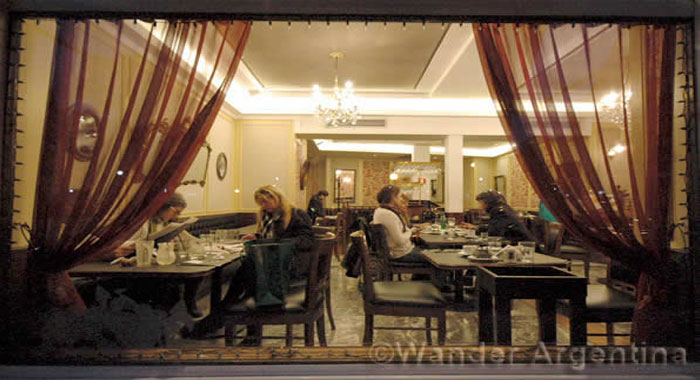


1 thought on “Guide to Ordering Coffee like a Local”
Comments are closed.